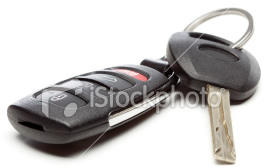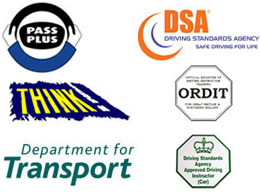Top 10 Safe Driving Tips
Today, we drive safer cars on safer roads; decades of advertisements and public information campaigns have made most of us safer drivers. Despite this progress, unfortunately, the number of vehicle accidents and fatalities nationwide is still quite staggering. Did you know that motor accidents are the leading cause of death for people between the ages of three and 34 in this country.
Improvements in technology will continue to help bring those numbers down, but the bottom line remains that most car accidents are the result of human error. The best way to reduce the risk of being involved in an accident is to practice safe driving behaviours. Whether you’re just learning to drive or you’ve been behind the wheel for decades, it’s a good idea to review some basic rules for safe driving. Listed below are the top ten safe driving tips.
1: Keep Your Vehicle Safe
Vehicle maintenance isn’t just an important way to extent your car’s life — it’s a major safety issue. Many maintenance issues are addressed by compulsory vehicle inspections. If your car is unsafe, the inspecting mechanic will let you know what you need to do to fix it. However, there could be a year or more between inspections, so car owners need to be aware of any potential safety issues and get them repaired before they lead to an accident.
One of the most common maintenance problems that can lead to a crash is improper tyre pressure. Uneven tyre pressure, or pressure that is too high or low, can impact performance or lead to a blowout — especially in high-performance cars or heavy vehicles. You can buy a cheap pressure gauge at any auto parts store and check the pressure against the recommendation in your owner’s manual. While you’re at it, you might want to rotate your tyres to promote even wear and consistent performance.
Another key area is the car’s brakes. If you notice some “softness” in the brake pedal, or feel a vibration when the brakes are applied, get them checked out by a professional mechanic. The brakes could be wearing out or you could have a problem with the car’s hydraulic system.
2: Practice Defensive Driving
This tip is pretty simple to understand if we just put the proverbial shoe on the other foot. Remember that one time when that jerk came flying down the street out of nowhere, totally cut you off and almost caused a huge accident? Don’t be that jerk.
Aggressive driving is hard to quantify, but it definitely increases the risk of accidents. Studies show that young male drivers are more likely to drive aggressively. An aggressive driver does more than just violate the tips in this article — they may intentionally aggravate other drivers, initiate conflict, use rude gestures or language, tailgate or impede other cars, or flash their headlights out of frustration. These behaviours aren’t just annoying, they’re dangerous.
Defensive driving incorporates the other tips shown here, such as maintaining a safe distance and not speeding, but remaining calm in the face of frustrating traffic issues is another major part of the concept. Accept small delays, such as staying in line behind a slower car instead of abruptly changing lanes. Yield to other cars, even if you technically have the right of way.
Defensive driving is not only safer, it can save you money. Many insurance companies offer discounts to drivers who complete defensive driving courses.
3: Watch Out for the Other Guy
Sometimes, it doesn’t matter how safely you drive. You could be driving the speed limit and obeying all traffic rules and someone else can crash into you. One good rule of thumb to use is, “Assume everyone else on the road is an idiot.” In other words, be prepared for unpredictable lane changes, sudden stops, un-signalled turns, swerving, tailgating and every other bad driving behaviour imaginable. Chances are, you’ll eventually encounter someone like this — and it pays to be ready when you do.
It’s impossible to list all the possible things another driver might do, but there are a few common examples. If you’re pulling out of a driveway into traffic and an oncoming car has its turn signal on, don’t assume it’s actually turning. You might pull out only to find that turn signal has been blinking since 1987. If you’re approaching an junction where you have the right of way, and another approaching car has the stop sign, don’t assume it will actually stop. As you approach, take your foot off the gas and be prepared to brake.
Of course, being prepared requires awareness, so make sure you check your mirrors and keep an eye on side streets so you’ll know which other cars are around you and how they’re driving. Don’t focus only on the road in front of your car — look ahead so you can see what’s happening 50 to 100 yards (46 to 91 meters) up the road.
4: Don’t Follow Too Closely
Safe driving guidelines advise drivers to keep a safe distance between themselves and the car ahead. Drivers need enough time to react if that car makes a sudden turn or stop. It can be too difficult to estimate the recommended distances while driving and the exact distance would have to be adjusted for speed, so most experts recommend a “two-second rule.”
The two-second rule is simple. Find a stationary object on the side of the road. When the car ahead of you passes it, say “Only a fool breaks the two second rule”. You should complete the saying before you pass the same object. Once you have some driving experience and have practiced keeping this minimum distance, you’ll develop an instinct for it and know how close to follow without having to say it. However, even experienced drivers should say it now and then to make sure.
At night or in inclement weather, double the recommended time. Ie say it twice.
5: Be Extra Careful in Bad Weather
If you’re driving through fog, heavy rain, a snow storm or on icy roads, be extra cautious. Take all of the other tips presented here and make full use of them: Drive below the speed limit if necessary, maintain extra space between you and the car ahead, and be especially careful around curves. If you’re driving through weather conditions you don’t know well, consider delegating driving duties to someone who does, if possible. If the weather worsens, just find a safe place to wait out the storm.
If you’re experiencing bad visibility, either from fog or snow, and you end up off the side of the road (intentionally or otherwise), turn off your lights. Drivers who can’t see the road will be looking for other cars to follow along the highway. When they see your lights, they’ll drive toward you and may not realize you’re not moving in time to avoid a collision.
6: Wear Your Seat Belt
Seat belts save lives. Worn properly, they prevent you from being thrown around the inside of a crashing vehicle or, worse, thrown through the windscreen and flung completely out of the vehicle.
Everyone has heard horror stories about people who were killed in bizarre freak accidents in which they’d have lived if only they hadn’t been wearing a seat belt. Even if these stories are true — many of them are exaggerations or urban legends — they’re also anomalies. In the overwhelming majority of car crashes, you have a greater chance of surviving if you’re wearing a seat belt.
Even a low-speed crash can send an unbelted person careening into the dashboard or side window, resulting in severe head injuries or broken bones. At higher speeds, the possible fates of the unbelted occupant are gruesome: severe lacerations from being propelled through the windscreen; struck by other cars because you landed on the road; slammed into a tree or a house at 50 mph (80 kph). Sound scary? Then buckle up.
7: Don’t Drive Drowsy
If a driver is tired enough to actually fall asleep while driving, the results are predictable. Even on a relatively straight highway, a sleeping driver will eventually drift off the road. Trees, utility poles, ravines and bridge abutments turn this into a deadly scenario — and that doesn’t even take other cars into account.
You might think a few yawns are nothing to worry about, but just being a little drowsy is enough to increase your risk of getting in an accident. Responses can range from dozing off for a few seconds at a time to simply “zoning out” and losing all focus on the road. At highway speeds, one or two seconds of inattention can lead to disaster.
The solution is simple: Get a better night’s sleep! Make sure you get a solid eight hours of sleep, not just on the night before a long drive, but on a regular basis. Failure to get enough sleep every night builds a sleep deficit that can leave you drowsy and unable to focus. If you’re driving and feel the least bit groggy, take action immediately. Don’t think you’ll get any kind of warning before you fall asleep, or that you can fight it off. People can move from drowsy to sound asleep without warning. If this happens to you, have a friend take over behind the wheel, find a rest area where you can catch a few hours of sleep or take a break until you’re feeling more alert.
8: Avoid Distractions
In the UK it is illegal to use of mobile phones while driving. The chance of you being involved in an accident while using a mobile phone increases dramatically. If you think that talking and texting while driving isn’t a big deal, consider this: One researcher compared the reaction time of a 20-year-old driver talking on a mobile phone to that of a 70-year-old driver. What’s more, working a mobile phone behind the wheel can delay reaction times by as much as 20 per cent.
It isn’t just mobile phones that cause distractions, however. Eating, applying makeup, fiddling with electronic devices or interacting with passengers also diverts a driver’s attention in potentially deadly ways. Perhaps the best advice on driving distractions came from rocker Jim Morrison: “Keep your eyes on the road, your hands upon the wheel.”
9: Don’t Speed
As the old public service campaign so succinctly put it, “Speed kills.” Research has shown that for every mile per hour you drive, the likelihood of your being in an accident increases by four to five per cent . At higher speeds the risk increases much more quickly.
For your average drive across town, driving even 10 mph (16.1 kph) faster is only going to save you a few minutes — while increasing your crash risk by as much as 50 per cent. Even on long trips, the time you’ll save is inconsequential compared to the risks associated with speeding. Take your time and obey posted speed limits. If you really need to get there as fast as possible, there’s one fool-proof solution: Leave earlier.
10: Don’t Drive Drunk
More than 30 per cent of all motor accident fatalities in the UK involve drivers impaired by alcohol. Most of those deaths could’ve been avoided if the drivers involved simply hadn’t gotten behind the wheel while drunk.
Alcohol causes a number of impairments that lead to car accidents. Even at low blood-alcohol levels, intoxication reduces reaction time and coordination and lowers inhibitions, which can cause drivers to make foolish choices. At higher levels, alcohol causes blurred or double vision and even loss of consciousness. Drunk driving isn’t just a terrible idea — it’s a crime
It’s easy to avoid driving drunk. If you’ve been drinking, ask a sober friend for a ride or call a taxi. If you’re planning to drink, make sure you have a designated driver. The mild inconvenience of taking a taxi home is nothing compared to the disastrous consequences of driving drunk.





